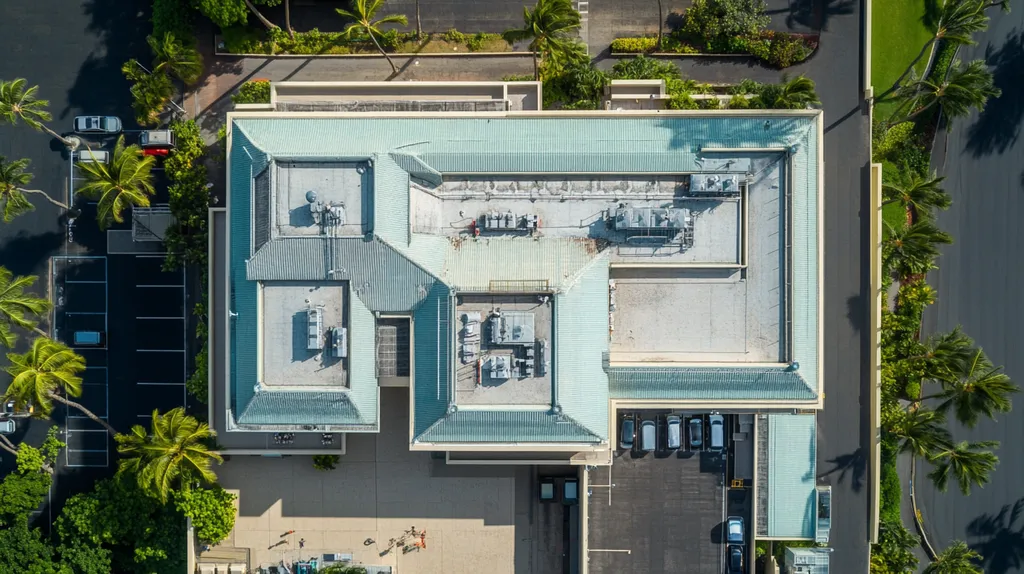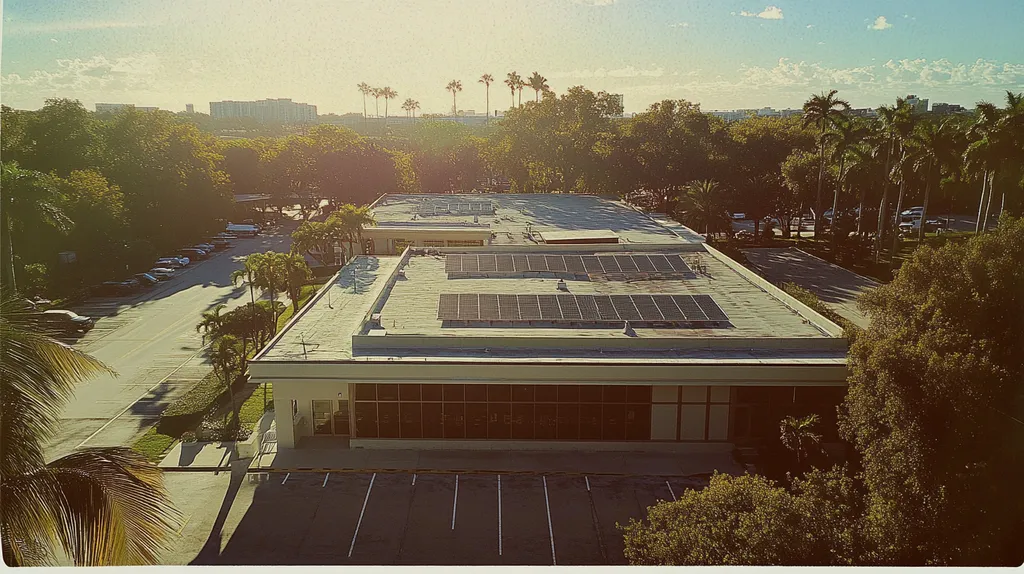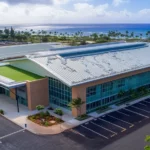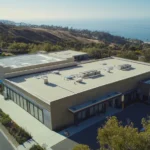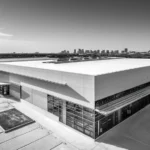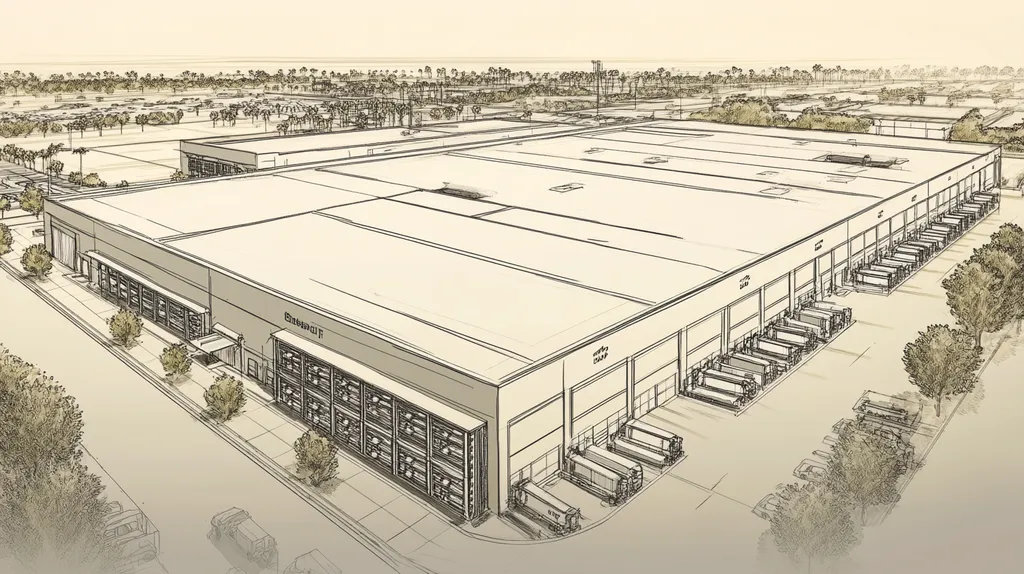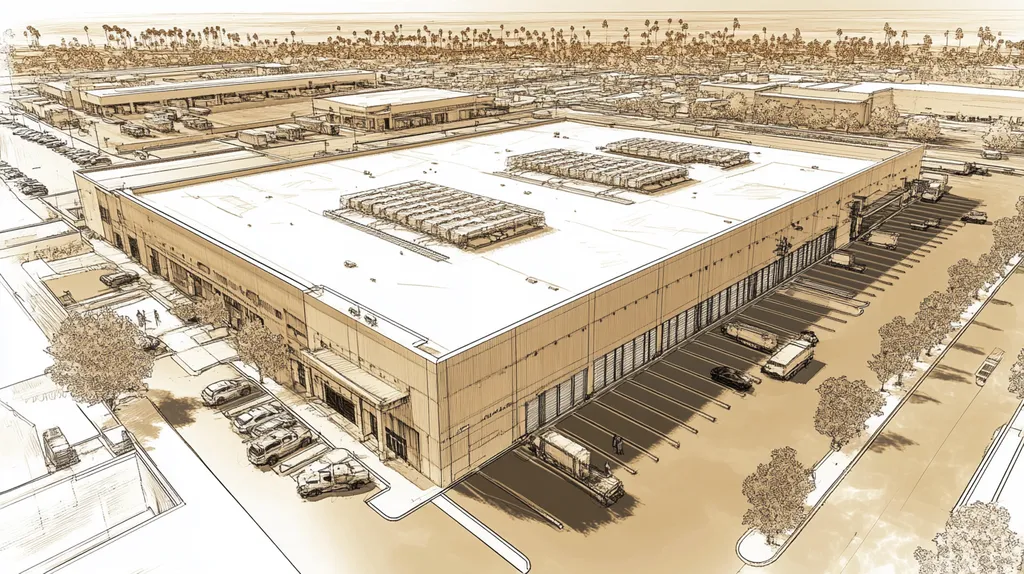Ultraviolet radiation poses a critical threat to industrial roofing systems, with studies showing UV damage can reduce a roof’s lifespan by up to 50% when inadequately protected. Recent industry data indicates that 40% of premature roof failures stem from improper UV protection measures.
The selection of appropriate protective coatings represents a significant financial decision for facility managers, with implications extending far beyond initial installation costs.
This comprehensive analysis examines the science behind UV protection, dispels common misconceptions, and provides evidence-based solutions for maximizing roof longevity through proper coating selection and application.
SECTION 1: COMMON MISCONCEPTIONS
Misunderstandings surrounding UV protection in industrial roof coatings can lead to significant financial repercussions for property owners and facility managers. Many people mistakenly believe that all coatings provide the same level of UV defense, overlooking critical differences that can dramatically impact performance. Research indicates that poor coating choices can shorten a roof’s lifespan by up to 50%. This, in turn, affects not only the roof but also the entire facility’s operational efficiency. Recognizing and addressing these misconceptions is essential for making informed investments that boost a roof’s durability and functionality.
Myth: All Coatings Offer Equal UV Protection
A prevalent misconception is that all roof coatings provide the same level of UV protection. This is misleading. Each coating is formulated with distinct chemical compositions, resulting in varying degrees of UV resistance.
For example, silicone coatings often outperform acrylics in terms of UV reflectivity and durability. In hotter climates, the wrong choice of coating can break down more quickly, potentially leading to leaks and higher maintenance expenses.
Facility managers must closely examine the specific performance characteristics of each coating option. The suitability of a coating can significantly influence the roof’s long-term performance and stability.
Choosing coatings based on precise product specifications and performance data, rather than assumptions, enables a more solid investment that extends the life of the roof.
Misunderstanding Coating Colors and Their Effects
The choice of coating color significantly influences its effectiveness against UV rays, yet this is often overlooked. Lighter colors generally reflect more sunlight, helping to lower rooftop temperatures and reduce thermal expansion.
For instance, white coatings can significantly lower surface temperatures compared to darker shades, which tend to absorb heat. This temperature reduction can lead to decreased energy costs for cooling and a more stable roofing structure.
However, some property owners might prioritize aesthetic appeal and choose darker colors, neglecting the potential implications of increased heat absorption. This decision can hasten wear and tear, leading to more frequent maintenance issues.
By understanding the relationship between color and performance, property owners can make informed choices that balance both functional needs and visual appeal, resulting in a more efficient roofing system.
Ignoring Material Compatibility
Another critical factor frequently overlooked is the compatibility between the roof substrate and the selected coating. Not all coatings adhere effectively to every type of roofing material, which can lead to early coating failure.
For example, applying an incompatible product to a metal roof can result in peeling or blistering over time, undermining any UV protection benefits. Such issues can necessitate costly repairs and disrupt industrial operations.
Property owners should carefully assess their existing roofing materials and select coatings engineered for compatibility. This approach ensures optimal adhesion and maximizes the coating’s effectiveness against UV rays.
Understanding material compatibility not only prolongs the roof’s useful life but also improves the facility’s overall performance and operational efficiency.
SECTION 2: PRACTICAL IMPLICATIONS
The detrimental effects of UV damage on industrial roofs can lead to serious consequences, including costly repairs and the need for premature replacements. Research indicates that roofs without adequate UV protection may lose up to 50% of their lifespan. Understanding these impacts is essential for property owners seeking to protect their investments. This section will delve into the ramifications of UV damage on roof structure, energy efficiency, and the risks associated with water and chemical exposure.
Impact of UV Damage on Roof Structure
UV rays continuously bombard roofing materials, causing them to warp, crack, and degrade over time. This deterioration can severely compromise the overall structural integrity of the roof, resulting in leaks and other significant problems. For instance, a thermoplastic polyolefin (TPO) roof lacking UV protection may show surface cracking within just a few years.
Recognizing the direct effects UV rays have on different materials is crucial. EPDM roofs, for example, can exhibit ozone-related discoloration, which is an indicator of weakening. This issue goes beyond aesthetics, as it affects the roof’s ability to provide essential protective functions.
Once structural damage manifests, repair costs can escalate dramatically. A small crack can evolve into a situation requiring extensive patching or even a full roof overlay, leading to expenses that far exceed proactive UV protection investments.
In summary, ignoring UV threats not only compromises a roof’s lifespan but also lays the groundwork for costly repairs in the future. Therefore, property owners should prioritize UV protection as a key element of their comprehensive roofing strategy.
Effects on Energy Efficiency and Costs
The link between UV exposure and energy efficiency is significant. A roof with structural integrity hampered by UV damage will drive increased energy consumption, as HVAC systems have to work harder to maintain comfortable indoor temperatures. In fact, a poorly maintained roof could boost energy costs by 15% or more.
This inefficiency is often a result of diminished reflective properties. For example, roofs designed to reflect sunlight may lose this ability as their surfaces deteriorate, leading to steeper cooling costs during hot months.
The impact of rising energy costs can strain budgets over time. Facility managers should consider that cumulative expenses related to roof maintenance, energy bills, and lost operational efficiency may far exceed the initial investment in UV protective coatings.
Investing in UV protection not only safeguards the roof but is also a financially savvy decision that results in long-term savings through enhanced energy efficiency.
Consequences of Water and Chemical Damage
UV damage can create vulnerabilities that increase the risks of water and chemical exposure. As roofing materials break down, they become more prone to leaks that allow water ingress, initiating a cycle of damage that weakens the roof structure, insulation, and even interior spaces.
Moreover, the combination of UV degradation and exposure to harsh chemicals presents significant challenges. Industrial roofs frequently encounter such chemicals, which can penetrate weakened surfaces and accelerate deterioration.
For instance, when a roof suffers from chemical spills compounded by inadequate UV protection, the combined effects can lead to critical failures, requiring immediate and costly repairs.
Ultimately, property owners must recognize that neglecting UV protection can significantly heighten the risks tied to water and chemical damage. Taking proactive measures against UV threats can mitigate these risks, ensuring the structural integrity and reliability of the roof for years to come.
SECTION 3: COST OF MISINFORMATION
The implications of misinformation regarding UV protection in roofing can have far-reaching financial consequences. When property owners mistakenly assume that all coatings offer adequate UV resistance, they unknowingly expose themselves to substantial losses. A report from the National Roofing Contractors Association highlighted that inaccuracies in roof assessments could lead to premature failures, costing companies upwards of $50,000 in repairs and replacements. Understanding the true effectiveness of coatings is essential to safeguarding investments and maintaining operational efficiency.
Financial Consequences of Premature Roof Failure
When roofs fail prematurely due to insufficient UV protection, businesses face dire financial repercussions. The costs extend well beyond mere repair expenses, encompassing lost productivity as operations may need to pause, disruption of services, and potential legal liabilities for creating unsafe work environments.
In some instances, roofs without adequate protection may require complete replacement far sooner than their expected lifespan of 15 to 30 years. As a result, property owners can encounter unexpected financial burdens that could have been avoided with informed decisions on coating selection.
Moreover, emergency repairs and hasty roof replacements can further drain budgets and disrupt ongoing operations, forcing businesses to divert funds away from strategic investments. By prioritizing accurate information, property owners can make proactive decisions to avoid the costly pitfalls of misunderstanding roofing materials.
In essence, investing in quality UV protective coatings is a critical measure for ensuring roof integrity and protecting financial stability.
Energy Costs Associated with Ineffective Coatings
Ineffective UV coatings can lead to skyrocketing energy costs. When coatings fail to reflect sunlight properly, buildings may overheat, resulting in excessive reliance on air conditioning to maintain comfortable indoor temperatures. The U.S. Department of Energy estimates that cooling energy costs can rise by 10% for every degree a roof’s temperature increases.
This inefficiency translates into thousands of dollars in additional energy expenses over time, increasing the economic burden on facility managers. Furthermore, higher energy consumption results in greater greenhouse gas emissions, which raises concerns in today’s environmentally conscious marketplace.
Being aware of how UV coatings impact energy efficiency is crucial for property owners. Selecting high-performance coatings can significantly lower energy consumption, leading to reduced utility bills and a smaller carbon footprint. Such decisions promote both financial and environmental sustainability.
Maintenance and Repair Costs Over Time
When roofs receive inadequate UV protection, maintenance costs can spiral out of control. Inconsistent coating performance often results in more frequent repairs, as roofs vulnerable to UV damage develop issues like cracking, peeling, and deterioration, which require costly interventions.
Even with a maintenance contract, if the roof is already compromised, the ongoing costs for repairs can exceed the initial investment. Increased frequency of inspections and touch-ups demands additional financial and labor resources.
Property managers must also consider the expenses associated with mobilizing crews and equipment for repairs that could have been avoided with better coating choices. The disruptions from continual maintenance can distract teams from their core operations, draining resources away from more productive endeavors.
Ultimately, making informed choices about UV protective coatings not only enhances roof durability but also significantly reduces long-term maintenance costs, promoting a healthier bottom line for the property.
SECTION 4: REALITY CHECK
For many industrial facilities, selecting the right roof coating is a crucial decision with significant long-term implications. Inadequate UV protection can lead to accelerated roof failure, resulting in costly repairs and operational interruptions. Roofs that degrade rapidly due to sun exposure often require replacements much earlier than anticipated. Understanding the realities of UV resistance in coatings is essential for effective facility management and safeguarding investments.
Understanding UV Resistance in Coatings
UV resistance in roofing coatings is not just a marketing term; it represents a critical performance standard. Over time, UV rays can significantly shorten a roof’s lifespan, causing materials to crack, fade, and ultimately lose their integrity. Coatings specifically engineered for robust UV protection can dramatically extend the life of industrial roofs.
However, not all coatings provide the same level of protection. Some may offer basic UV resistance but lack the advanced polymer formulations that enhance durability under intense sunlight. Property owners must ensure that their selected coating meets established industry UV standards to ensure optimal performance.
Testing protocols, such as ASTM D5870, effectively assess a coating’s resilience against UV exposure. Coatings that successfully meet these rigorous tests typically come with better warranties, reflecting their reliability. Engaging in this due diligence not only protects the roof but can also prevent unanticipated repair costs down the line.
In summary, prioritizing a deep understanding of UV resistance is vital for facility owners. Neglecting the distinctions between coatings can jeopardize both the structural integrity of the roof and the financial health of the organization.
Importance of Reflectivity and Absorption
Reflectivity is a critical factor in determining a roof coating’s capability to combat UV radiation. Higher reflectivity equates to lower heat absorption, leading to cooler indoor environments and reduced energy costs. For instance, light-colored coatings can reflect up to 85% of solar energy, minimizing heat buildup in commercial buildings.
Conversely, darker coatings absorb significantly more heat, which can increase thermal stress on roofing materials. This added stress accelerates wear and facilitates moisture intrusion, adversely affecting the roof’s overall performance. Selecting a reflective coating is essential not only for UV protection but also for enhancing energy efficiency.
The geographical climate further influences the choice of reflective coatings. In areas with high sun exposure, a coating that maximizes reflectivity can help stabilize indoor temperatures and prolong the lifespan of the roof. Such an investment can lead to substantial reductions in cooling costs, a critical factor for facilities operating within tight budget constraints.
Ultimately, the importance of reflectivity cannot be overstated. Strategic coating selections that marry UV protection with energy efficiency create a compelling case for investing in reflective coatings for industrial roofs.
Role of Coating Thickness and Cure Times
The thickness of a roof coating plays a vital role in its protective attributes. Typically, thicker applications provide enhanced UV resistance and durability. For example, a 20-mil coating can afford much greater protection than a 10-mil counterpart, effectively shielding the roofing substrate from detrimental UV rays.
Equally important are proper curing times, which are essential for optimizing a coating’s performance. Inadequate curing can weaken adhesive properties, leading to peeling or cracking when subjected to UV radiation. Consequently, facility managers must adhere closely to manufacturer guidelines regarding application techniques and curing durations.
Environmental factors, such as humidity and temperature, also influence curing times and the effectiveness of coatings. Each application may require special attention to these variables to ensure the coating fully cures and activates its protective benefits. A comprehensive understanding of these aspects will help facility managers achieve optimal results from their roofing investments.
In conclusion, thicker coatings combined with proper cure times significantly enhance UV protection. Property owners focusing on these critical factors are likely to experience fewer maintenance challenges and longer-lasting roofing systems.
SECTION 5: EVIDENCE-BASED ALTERNATIVES
In an era where industrial roofs face increasing UV exposure, selecting the appropriate coating is paramount to safeguarding these valuable assets. A subpar coating can result in structural deterioration, mounting maintenance costs, and diminished energy efficiency. By recognizing and evaluating diverse coating options, property owners can make decisions grounded in evidence. This section highlights the advantages of acrylic, silicone, and polyurethane coatings, essential considerations based on climate, and their compatibility with various roofing materials.
Benefits of Acrylic, Silicone, and Polyurethane Coatings
Acrylic coatings are water-based solutions that deliver exceptional UV resistance, extending the lifespan of industrial roofs. Their fast-drying properties allow prompt application, minimizing disruption to operational workflows. Notably, acrylics effectively reflect UV rays, aiding in lowering roof temperatures and subsequently reducing cooling costs.
On the other hand, silicone coatings excel in regions experiencing heavy rainfall. These coatings form a robust waterproof barrier while maintaining impressive UV resistance. Their inherent flexibility allows them to expand and contract with the roof, substantially mitigating the risks of cracking. Additionally, silicone coatings are straightforward to repair, providing a long-term solution for many facilities.
Polyurethane coatings stand out for their durability and resistance to abrasion. They perform exceptionally well across diverse climate conditions, offering significant protection against chemical spills and severe weather. Their sturdy composition enables them to withstand foot traffic without compromising performance or effectiveness.
Familiarity with the distinct benefits of each coating type empowers property owners to choose an option that best suits their specific requirements and maximizes the longevity of their roofs.
Choosing the Right Coating for Your Climate
Climate plays a crucial role in coating selection. Locations with high UV indexes necessitate coatings that provide superior reflectivity. In such cases, acrylic coatings are frequently favored for their strong UV protective qualities and energy-saving capabilities.
Conversely, industrial plants located in humid or rainy environments can reap the greatest benefits from silicone coatings. These coatings effectively repel water and inhibit mold growth, significantly reducing maintenance costs tied to leaks and deterioration. Their performance in wet conditions makes them a smart choice for areas with frequent rainfall.
For facilities situated in regions subject to extreme temperature fluctuations, polyurethane coatings offer exceptional adaptability. Their capacity to withstand thermal expansion and contraction ensures reliable protection over time, promoting durability.
Ultimately, aligning a coating selection with the local climate enhances performance and extends the roof’s life, thereby preserving valuable assets.
Compatibility with Various Roofing Materials
Ensuring the selected coating is compatible with the existing roofing material is crucial for optimal performance. Many roofs consist of materials such as EPDM, TPO, or metal, each requiring specific types of coatings for effective protection.
Acrylic coatings often bond well with single-ply membranes like TPO and PVC. Their superior adhesion properties guarantee a solid connection, maximizing protection. Furthermore, these coatings can be easily applied to spray foam roofing systems, enhancing their versatility.
Silicone coatings perform exceptionally on both metal and flat roofing systems. Their waterproof features improve the existing material while bolstering UV resistance. However, caution must be exercised, as silicone should not be applied over acrylics due to potential adhesion issues.
Polyurethane coatings are compatible with a variety of roofing types but demand thorough surface preparation to ensure optimal adhesion. By confirming compatibility, property owners can prevent costly errors that could undermine the longevity and efficiency of their roofing systems.
SECTION 6: TEST AND VERIFY
Regular testing and verification of UV protection in industrial roof coatings are essential to prevent costly repairs and premature replacements. A study by the National Roofing Contractors Association shows that roofs lacking proper maintenance can result in an average 10% increase in annual energy costs. This section will emphasize the importance of conducting routine inspections, testing for UV resistance, and evaluating coating performance over time.
Conducting Regular Roof Inspections
Regular inspections of industrial roofs are critical for combating UV damage. Property owners should schedule inspections at least twice a year and following severe weather events to identify potential issues early. Attention should be paid to signs of deterioration, such as cracks or discoloration, which indicate that UV exposure may be compromising the roof’s integrity.
Documenting inspection findings provides valuable insights to inform maintenance strategies. Accumulated data can reveal trends and help determine whether coatings are performing as intended. Facilities managers may consider training internal staff to recognize warning signs or hiring professional inspectors for detailed evaluations.
Early identification of problems allows for timely interventions, potentially saving substantial costs compared to addressing extensive damage later. Consistent inspections represent a prudent investment aimed at prolonging the life of industrial roofs.
Testing for UV Resistance and Durability
Testing UV resistance is crucial for assessing the effectiveness of roof coatings. Specific tests, such as ASTM G154, simulate UV exposure over time to evaluate how coatings perform under intense sunlight and whether they resist degradation effectively.
Facilities managers should obtain UV resistance data from manufacturers prior to coating application. This vital information helps guide decisions toward products proven to withstand harsh conditions. Testing not only evaluates initial coating performance but also predicts long-term durability under UV exposure.
By prioritizing UV testing, property owners can make informed choices that enhance protection. This proactive measure ensures that investments in roof coatings yield returns through reduced maintenance costs and extended roof life.
Evaluating Coating Performance Over Time
Ongoing evaluation of coating performance is essential for assessing their effectiveness against UV damage. Scheduled re-evaluations every three to five years can disclose whether coatings continue to provide adequate protection. Both visual inspections and material testing will help determine if reapplication or repairs are necessary.
These evaluations should factor in changes in local climate conditions, as UV exposure can vary by region. In locations with heightened UV radiation, increased vigilance in measuring coating effectiveness is necessary for maintaining roof integrity. Data gathered from evaluations can improve maintenance schedules over time.
Structured assessments help build a comprehensive history of a roof’s performance. This information drives strategic improvements and optimizes resource allocation. By treating coating evaluation as an ongoing process, facilities managers can ensure their roofs remain resilient against UV challenges.
The Bottom Line
With UV damage responsible for up to 50% of premature industrial roof failures, proper coating selection and verification have never been more critical for facility operations.
The evidence demonstrates that implementing appropriate UV-protective coatings can extend roof lifespans by 15-20 years while reducing cooling costs by up to 30%.
Recent industry studies confirm that facilities investing in proper UV protection realize a return on investment within 3-5 years through reduced maintenance and energy savings.
By understanding coating characteristics, ensuring material compatibility, and maintaining regular inspection protocols, property owners can significantly reduce their exposure to costly repairs and replacements.
The future of industrial roofing depends on making informed, evidence-based decisions about UV protection that prioritize long-term performance over short-term savings.
FREQUENTLY ASKED QUESTIONS
Q. What are common misconceptions about commercial roof UV protection?
A. A prevalent misconception is that all roof coatings provide the same level of UV protection. This is misleading; each coating is formulated uniquely, resulting in varying UV resistance. Selecting coatings based on genuine product specifications rather than assumptions is vital for extending the life of the roof.
Q. How does UV damage affect industrial roof lifespan?
A. UV rays can cause roofing materials to warp and crack over time, dramatically shortening their lifespan. Research indicates roofs without adequate UV protection risk losing up to half their lifespan, leading to unexpected repair costs and operational issues. Prioritizing UV protection can enhance the overall durability of the roof.
Q. What financial consequences arise from premature roof failure?
A. Premature roof failure can lead to substantial financial repercussions, including unexpected repair costs and lost productivity due to operational interruptions. Facilities may face additional expenses associated with emergency repairs or replacements that could have been avoided with proper UV protection. Accurate assessments are critical for financial planning.
Q. Why is understanding UV resistance in coatings essential?
A. Understanding UV resistance in coatings is vital because it directly impacts a roof’s lifespan and integrity. Coatings engineered for UV protection can prolong the structural health of industrial roofs. Moreover, not all coatings offer equal levels of protection, making informed decisions necessary for effective facility management.
Q. What are the benefits of acrylic and silicone coatings?
A. Acrylic coatings provide exceptional UV resistance and reflectivity, which can lower roof temperatures and cooling costs. In contrast, silicone coatings excel in waterproofing and flexibility, particularly in humid climates, reducing maintenance needs. Understanding these benefits assists property owners in making informed coating selections appropriate to their environments.
Q. How often should industrial roofs be inspected?
A. Industrial roofs should be inspected at least twice a year, particularly after severe weather events. Regular inspections help identify early signs of deterioration, such as cracks or discoloration caused by UV exposure. Documenting findings will assist in effective maintenance and timely interventions, ensuring prolonged roof longevity.
Q. What additional precautions should be taken with industrial roof coatings?
A. It is essential to ensure that the selected coating is compatible with existing roofing materials to maximize effectiveness. Additionally, proper application techniques and adherence to curing times are crucial for achieving optimal performance. Understanding these factors can avoid costly errors and maintain the durability of the roofing system.

